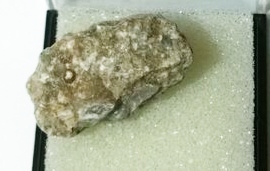Crinoidal LimeStone...

Most limestone's form in shallow, calm, warm marine waters. That type of environment is where organisms capable of forming calcium carbonate shells and skeletons can easily extract the needed ingredients from ocean water. When these animals die, their shell and skeletal debris accumulate as a sediment that might be lithified into limestone. Their waste products can also contribute to the sediment mass. Limestone's formed from this type of sediment are biological sedimentary rocks. Their biological origin is often revealed in the rock by the presence of fossils. Some limestone's can form by direct precipitation of calcium carbonate from marine or fresh water. Limestone's formed this way are chemical sedimentary rocks. They are thought to be less abundant than biological limestone's. Today Earth has many limestone-forming environments. Most of them are found in shallow water areas between 30 degrees north latitude and 30 degrees south latitude. Limestone
